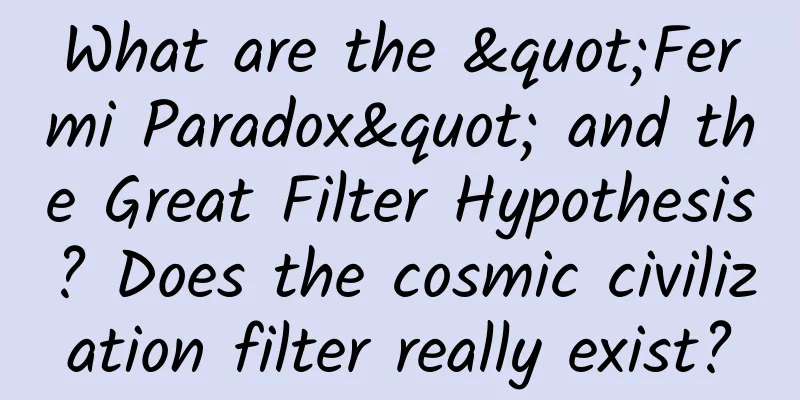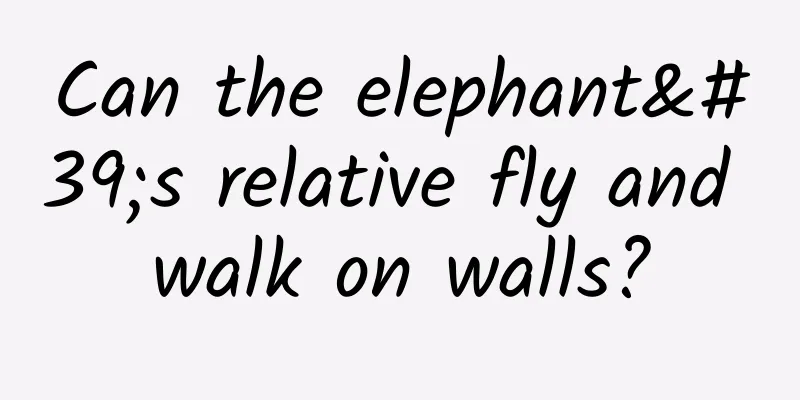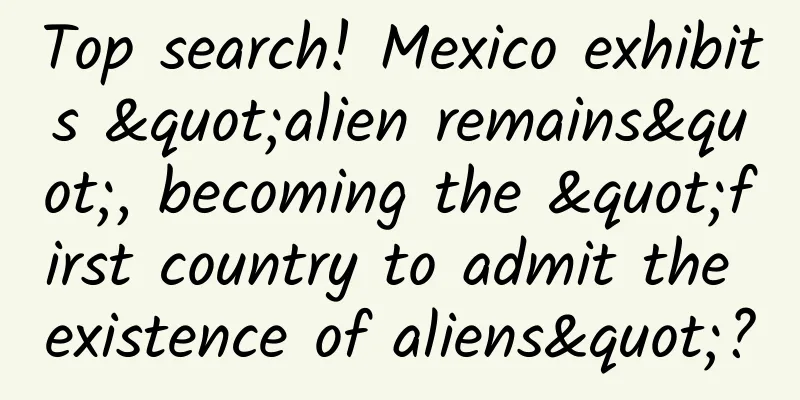What are the "Fermi Paradox" and the Great Filter Hypothesis? Does the cosmic civilization filter really exist?

|
After the "Fermi Paradox" about aliens was introduced in the 1950s, it aroused extensive discussion in the scientific community. Many scientists proposed various hypotheses to explain the Fermi Paradox, including the Drake Equation and Kardashev Civilization Hierarchy Theory that appeared in the 1960s. These have been elaborated in detail many times in my previous articles, so I will not go into details today. The so-called Big Filter Hypothesis is also a theory to explain the Fermi Paradox. Let us learn about it together. The origin and main content of the Fermi paradox To understand the Great Filter hypothesis, we must first understand what the Fermi Paradox is. The so-called Fermi Paradox, also known as the Fermi Paradox, was proposed by Enrico Fermi, a famous scientist and winner of the 1938 Nobel Prize in Physics. It is a scientific paradox related to aliens and interstellar travel. Simply put, it is a question: "Where are the aliens?" This question is raised because humans have been searching for aliens for many years but have not found even a single trace. Our universe is more than 13 billion years old. Logically, it should have long since developed a civilization capable of interstellar travel. Why haven't we discovered any yet? Scientific observations show that there are hundreds of billions of stars in the Milky Way alone, and the sun is just one of them, not special; likewise, the earth is an ordinary planet, not special. But the solar system is still very young, only about 5 billion years old, and there must be stars much older than the sun in the universe, so it is possible that civilizations have existed for billions of years. Even if the speed of light cannot be broken, these civilizations can still travel across galaxies at conventional speeds, but why is there no movement at all? This is a difficult contradiction to solve, a century-old problem known as the Fermi paradox or the Fermi paradox. After the Drake equation was developed, people used it to calculate the number of civilizations that should exist in the universe; after the civilization classification theory was developed, people used telescopes to scan the starry sky based on this theory to look for planets that have achieved advanced civilizations. But so far, nothing has been found. This has led to roughly three theories: one is that human civilization is the only civilization that has appeared and existed in the universe; one is that the universe is too large, civilizations are rare, and it is difficult for them to communicate with each other, so it is difficult for civilizations to know and meet each other; and another is that no civilization can last long, so it is even more difficult for civilizations at different stages to know and meet each other. After decades of debate, some people proposed the hypothesis of the Great Filter to explain the extremely rare civilization in the universe. Now, let’s understand what the “Great Filter Hypothesis” is. The so-called Great Filter hypothesis was proposed by Robin Hanson, an assistant professor at George Mason University in the United States in 1990. This theory is also intended to solve the Fermi paradox. Its main content is that in the process of the birth and development of civilization, some key links may be seriously underestimated. These links act as a great filter, preventing or destroying the birth and advancement of most civilizations. He believes that the birth and development of civilization requires at least nine key links: 1. There needs to be a suitable planetary system, at least in a habitable position and with organic matter; 2. Evolution of self-replicating macromolecules, such as RNA; 3. Evolution of relatively simple prokaryotic single-cell life; 4. Evolution of relatively complex eukaryotic single-cell life; 5. Evolution of sexually reproducing life; 6. Evolution of multicellular life; 7. Evolution of animals with large brains and the ability to use tools; 8. Evolution has developed into a civilization like human beings; 9. Develop into a civilization that colonizes the universe and the stars. My understanding is that each of these nine links is a major upgrade, and if any link is interrupted or frustrated, civilization cannot be born or cannot continue. Moreover, these are only some of the most important key links. Each link can be decomposed into many smaller links, and each step is very critical. It can be said that the birth and development of civilization is a thrilling step. So far, humans have not found any civilization that has reached the ninth step. Therefore, many people believe that there are traps at every step in the development of civilization. These traps are like filters that filter every upgrade of civilization development, making civilization die at any time and unable to move forward. The sub-filters that make up this big filter are: the earth's environment is extremely rare, and the probability of the emergence of civilization is extremely small; the dark forest effect between civilizations, mutual destruction; destruction by natural disasters, such as geological disasters, asteroid impacts, stellar explosions and other disasters; self-termination of civilization's technological development, such as nuclear war, biochemistry, artificial intelligence and other technological developments, which destroy their own civilization; the activities of advanced cosmic civilizations appear as natural phenomena and are difficult to detect, etc. Hansen and Andrew Schneider of Oxford University jointly summarized the theories about the great filter of civilization development. Among them, only the rare filter of the earth seems to be convincing. Because the earth is the birthplace of life and civilization, it is too coincidental and perfect. First, the Earth is located in the habitable zone of the Sun and has an ideal atmosphere and geomagnetic protection. Second, the Earth collided with a planet called Theia shortly after its birth, causing the Earth's axis to shift by 23.44 degrees, resulting in the change of seasons and the creation of a moon, which generates greater tidal forces. The solar system is far away from the center of the Milky Way, avoiding sources of radiation that are destructive to life. All these couplings and coincidences seem to be natural and centered around the birth of life and civilization. Such a coincidental and perfect planet in the universe should be too rare. However, scientists such as Hansen believe that some other so-called filters are not necessary conditions for filtering out civilization. Questioning the Great Filter Many scientists, including Hansen, have doubts about many of the so-called filters in the Great Filter Hypothesis. Space-Time Communications also has its own thoughts, which can be summarized as follows: 1. The causes of civilization and cosmic civilization are diverse, and perhaps the Earth environment is not the only way for civilization to appear. Therefore, it is not just coincidence and perfection like the Earth that can produce life and civilization. The shape of intelligent bodies and the way civilization develops may be completely different from Earth creatures, and may appear in a variety of ways that we cannot predict. 2. The extinction of a civilization is not that easy. Take human civilization on Earth as an example. It took 1 billion years for the origin of life to evolve from simple prokaryotic cells to eukaryotic cells. It also took 1 billion years from eukaryotic cells to multicellular animals and the emergence of the brain. However, it only took a few million years for ordinary intelligent animals to evolve into humans. Therefore, even if a natural disaster or man-made disaster of the level of destroying civilization really occurs, such as a nuclear war, a biological and chemical incident or plague, a geological disaster, an asteroid impact, a stellar explosion, etc., although it is possible that human civilization will be destroyed, it is difficult to completely destroy life. In this way, intelligent civilization can reappear in a relatively short period of time, as short as tens of thousands of years or as long as millions of years. 3. Will the development of scientific and technological civilization, such as artificial intelligence, eventually destroy human civilization? The rise of artificial intelligence may really have the potential to destroy the human body, but I believe that human civilization will not be interrupted. Because artificial intelligence itself is created by humans, the victorious artificial intelligence will inevitably inherit and develop civilization, and this civilization is likely to be a combination of human consciousness and machines. 4. The dark forest and chain of suspicion described in science fiction are just the embodiment of human thought at this stage. When civilization develops to a high level, the way of existence and the demand for resources have become increasingly simplified. For example, civilization will exist in a non-physical way, and the demand for energy and resources will also be simplified to only require stellar energy. Therefore, it is impossible for the ideology of advanced civilizations to remain in the state of fighting among humans, and the possibility of internecine slaughter is extremely small. To sum up, it seems unlikely that these so-called cosmic civilization filters actually exist, which means that there is a high possibility that they are relics of ancient civilizations. So, why haven't humans discovered the existence of these civilizations so far? Then there are only two possibilities left: 1. The universe is too vast and civilizations are too rare. Even if advanced civilizations break through the speed limit of light, it is difficult for them to know each other and meet; 2. Civilizations are diverse and difficult to communicate. In the Milky Way, the average distance between stars is about 4 light-years. Each star is like two coins thousands of kilometers apart. The probability of them finding each other and bumping into each other is extremely slim. Even if there are 1 million civilizations in the Milky Way, the average distance between them is thousands of light-years. This is a bit like two ants at the two ends of the earth. The probability of them crawling together is extremely close to zero. The rarity of cosmic civilizations may be far beyond human imagination. Some scientists estimate that only large galaxies like the Milky Way are likely to have a civilization. Then the Andromeda Galaxy M31, the closest large galaxy to the Milky Way, is 2.54 million light-years away from us, so the probability of the two civilizations meeting is even closer to zero. There are hundreds of billions or even trillions of galaxies in the observable universe. Therefore, even if there is only one civilization in a galaxy, there are hundreds of billions or even trillions of civilizations in the entire observable universe. It seems that there are a lot of civilizations, but there is almost no chance of knowing each other or meeting each other. Coupled with the diversity of civilizations, the ways of communication and cognition may be completely different, so even if they meet, they may not be similar. Therefore, humans may never find the so-called "aliens" and will become a civilization that will spend its entire life staring at the stars in loneliness. What do you think about this? Welcome to discuss and comment. The original copyright of Space-Time Communication is reserved. Please do not infringe or plagiarize. Thank you for your understanding and support. |
<<: Why did your memories before the age of three "disappear"?
>>: LAMOST: A high-speed satellite “census” tool
Recommend
The cost of product promotion is almost zero, how to recruit KOLs?
The promotion cost is almost zero, how to recruit...
Can't get up in the morning, and feel tired when you wake up? Maybe your alarm clock is not set correctly! Your health will get worse and worse...
The most painful thing in the world Nothing is be...
Plex: 2022 Smart Manufacturer Report
7 Current Status of Intelligent Manufacturing Acc...
Case Analysis | Ant Farm’s User Level Strategy
The most difficult part of setting user levels is...
Teacher Xueli: English Phonics + Phonetic Symbols + Pronunciation Rules Collection
Course Catalog: ├──1. Teacher Xueli’s high-qualit...
Is the country's first "online ID card" safe enough? ID card copies may be abolished
Zhang was on a business trip to another city. Whe...
Unveiling the secrets of space breeding: When a seed is hit by a cosmic particle by luck…
What are the differences between seeds that have ...
Case analysis of private domain growth of new tea drinks!
The tea beverage industry market has continued to...
A 10,000-word summary of how to attract fans to public accounts, 5 tricks to break the dilemma of attracting new users!
If you happen to be running a public account and ...
Which CDN is the fastest for server rental configuration?
To solve the server speed problem, there is not o...
Cases surge! Incubation period 2-8 days! Beware of this virus in the near future →
Recently, the COVID-19 epidemic situation in Chin...
Optimizing memory usage to improve .NET performance
There is a common misconception about the importa...
Academicians teach you how to choose a major | Do you want to be a "chief engineer"?
Your browser does not support the video tag Edito...
The cost of acquiring customers on online lending platforms is over a thousand yuan, but the conversion rate is less than 1%.
Despite the rising cost of acquiring customers, I...









